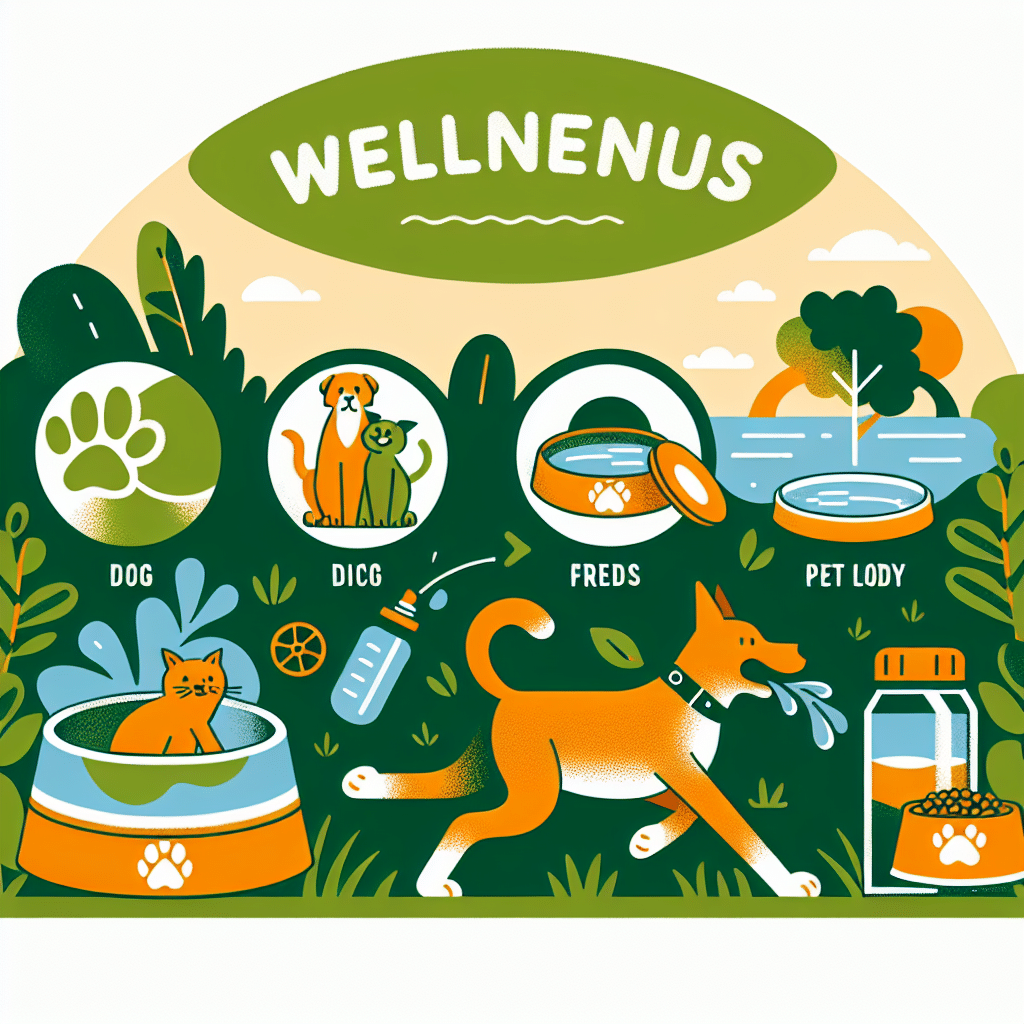Creating Eco-Conscious Pet Wellness Routines
Understanding Eco-Conscious Pet Ownership
Adopting an eco-conscious approach to pet ownership involves understanding how daily practices affect the planet. By prioritizing sustainability, pet owners can ensure the health and happiness of their furry companions while also minimizing their environmental impact. This encompasses everything from food choices and grooming products to healthcare and waste management.
Sustainable Pet Nutrition
-
Opt for Organic and Human-Grade Foods: Selecting organic pet food supports sustainable farming practices, as these products are free from synthetic chemicals and genetically modified organisms (GMOs). Brands that source ingredients from local farms also reduce carbon footprints associated with transportation.
-
Consider a Plant-Based Diet: Some pets can thrive on a well-researched, plant-based diet. This can help lessen the environmental impact associated with meat production. Always consult a veterinarian before making significant changes to your pet’s diet.
-
Purchase from Responsible Brands: Look for pet food companies that prioritize sustainability in sourcing and packaging. Brands that use recyclable materials and focus on minimizing their carbon footprint contribute positively to the environment.
-
Embrace Homemade Meals: Preparing home-cooked meals for pets allows for complete control over ingredients, promoting a healthier and more eco-friendly diet. Use seasonal, local vegetables, and lean proteins to create nutritious meals.
-
Practice Portion Control: Overfeeding pets contributes to waste and unnecessary expenses. Measuring food portions not only promotes a healthy weight but also minimizes waste.
Eco-Friendly Grooming Techniques
-
Choose Natural Grooming Products: Conventional grooming products often contain harmful chemicals. Opting for biodegradable, all-natural shampoos and conditioners reduces environmental toxins and protects your pet’s skin.
-
DIY Grooming Solutions: Creating homemade grooming products using household ingredients like oatmeal for a gentle shampoo or coconut oil for moisturizing can be a sustainable alternative to commercial products.
-
Regular Brushing: Regular brushing reduces shedding and minimizes the need for frequent bathing, which can waste water and expose pets to harsh chemicals.
-
Sustainable Grooming Tools: Selecting brushes and grooming tools made from bamboo or recycled plastics helps minimize plastic waste in landfills.
-
Support Local Groomers: Choose local grooming services that use eco-friendly practices, reducing carbon emissions associated with transportation.
Eco-Conscious Healthcare Choices
-
Holistic Veterinary Care: Consider holistic veterinarians who emphasize preventative care, which often aligns with eco-friendly practices, such as acupuncture or herbal remedies.
-
Natural Supplements: Use herbal supplements and remedies to boost your pet’s immune system and avoid synthetic medications whenever possible. Always consult with a veterinarian before administering any new treatments.
-
Regular Exercise: Keeping pets active helps maintain their health, thus reducing the need for vet visits. Outdoor activities like hiking or walking promote both physical and mental well-being without the ecological footprint of pet gyms or indoor facilities.
-
Spay/Neuter Responsibly: Spaying or neutering pets has numerous health benefits, reduces the risk of unwanted litters, and thus lessens the burden on shelters and rescues.
-
Recycling Medical Supplies: Look for opportunities to recycle or responsibly dispose of pet medications and healthcare supplies. Many communities have take-back programs for pharmaceuticals.
Sustainable Waste Management
-
Biodegradable Poop Bags: When walking your dog, choosing biodegradable poop bags instead of conventional plastic ones significantly lessens landfill contributions. These bags break down naturally over time instead of remaining in the environment for hundreds of years.
-
Composting Pet Waste: If permissible in your area, consider composting pet waste using an appropriate pet waste composter. This can create nutrient-rich compost while reducing landfill load.
-
Reuse and Recycle Pet Products: Instead of discarding old toys, consider repurposing or donating them. Many shelters welcome gently used items for pets in need.
-
Eco-Friendly Litter Options: If you have a cat, look for clumping cat litter made from recycled materials or natural substances like corn or wheat that are biodegradable.
-
Responsible Disposal of Pet Products: Items like old collars, harnesses, and bowls can often be recycled. Research local recycling programs to find the best practices.
Creating Green Spaces for Your Pets
-
Native Plant Gardens: Create a garden with native plants that require less water and attract local wildlife. This provides a stimulating environment for your pet while supporting local ecosystems.
-
Natural Pest Control: Instead of harmful pesticides, use natural options like neem oil or diatomaceous earth to manage pests in your garden, ensuring a safe space for your pets.
-
Creating an Enclosed Outdoor Area: If possible, design a sustainable pet area in your backyard using recycled materials for enclosures and pathways, ensuring a safe and eco-friendly play space.
-
Introduce Enrichment Activities: Implement eco-friendly enrichment activities such as puzzle toys made from sustainable materials or homemade games using recycled household items.
-
Educate on Environmental Impact: Teach your children about the importance of conserving nature for pets and wildlife through hands-on activities and garden care.
Community Practices for Eco-Conscious Pet Owners
-
Join Local Eco-Friendly Groups: Engage with community groups focused on sustainable pet ownership. Sharing tips and experiences with like-minded individuals can enhance your eco-conscious routine.
-
Participate in Clean-Up Events: Get involved in local clean-up initiatives that focus on parks and natural areas, helping to protect the environment for pets and wildlife alike.
-
Support Local Shelters and Organizations: Volunteer for programs that promote responsible pet ownership and environmental sustainability. This fosters community involvement and positively impacts local ecosystems.
-
Educate Your Peers: Share your eco-conscious practices with other pet owners to inspire them to adopt sustainable habits, creating a ripple effect of positive change.
-
Advocate for Green Policies: Support local policies that promote sustainable practices in pet care and environmental conservation, influencing community behaviors toward responsible pet ownership.
By incorporating these eco-conscious practices into your pet wellness routine, you can create a holistic lifestyle that supports both your pet’s health and the environment. Each small change adds up, ultimately leading to a healthier planet for future generations of pets and people alike.
